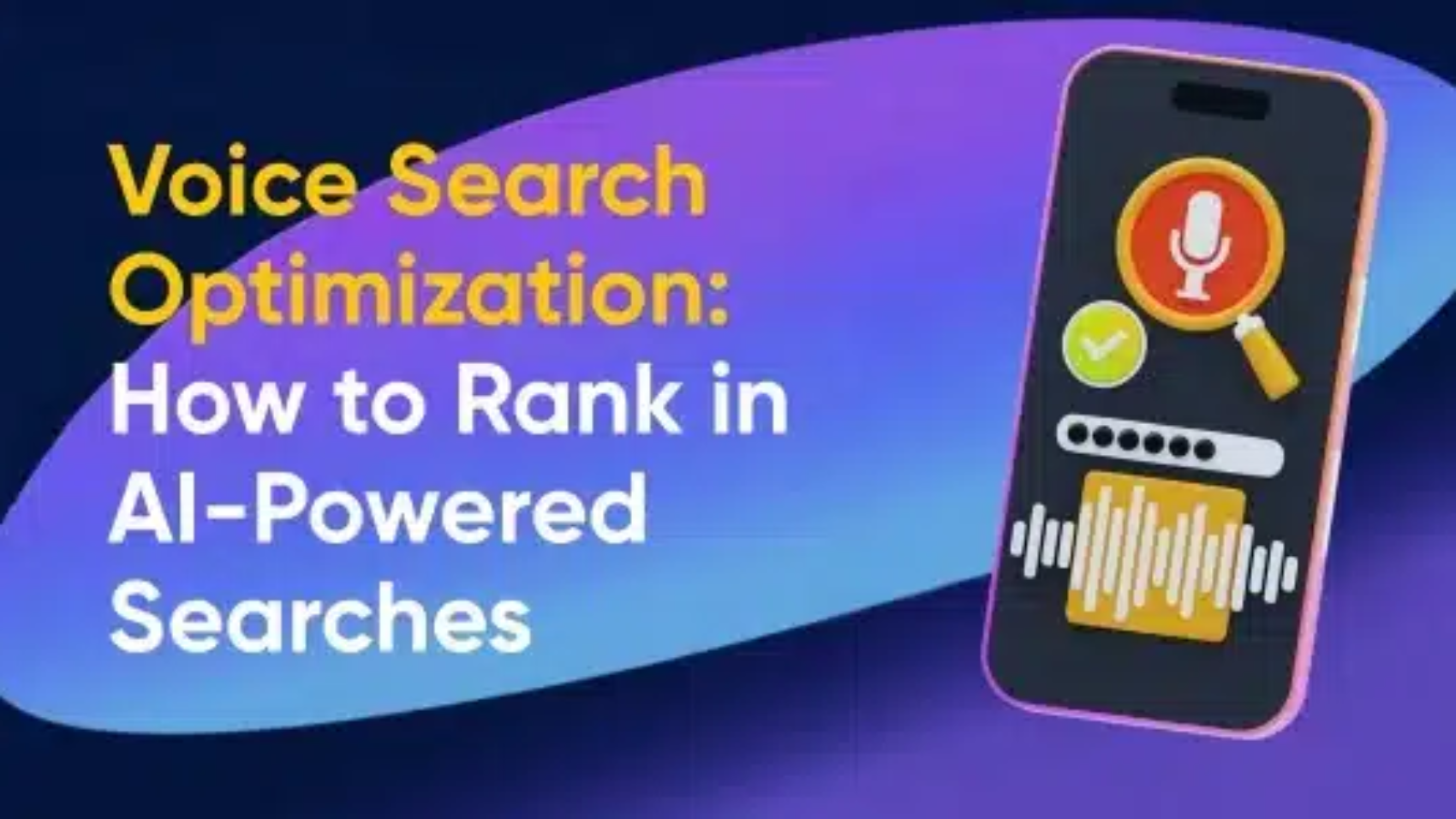In the fast-paced world of digital marketing, voice search has emerged as a game-changer, reshaping how users interact with search engines. The integration of advanced artificial intelligence (AI) into voice search technologies has not only improved user experience but also redefined the strategies businesses must adopt to remain visible online. With over 70% of Indians using voice assistants and smart speakers becoming a household staple, optimizing for voice search is no longer optional—it’s a critical component of staying competitive in SEO. This comprehensive guide explores the essential strategies for voice search optimization, tailored for AI-powered searches, offering actionable insights, best practices, and a glimpse into future trends to ensure your content ranks and resonates with today’s searchers.
Understanding Voice Search

Voice search has experienced explosive growth, driven by the convenience of hands-free querying and the widespread adoption of voice-enabled devices. According to recent data, 381 million households globally use smart home products, many of which support voice commands (WebFX). Additionally, 70% of Indians aged 18 and older utilize voice assistants on various devices, including smartphones, smart speakers, televisions, and cars. This trend is especially significant for local searches, as 58% of consumers rely on voice search to locate nearby businesses.
The backbone of this evolution is AI, which powers voice assistants like Google Assistant, Siri, and Alexa. Advanced natural language processing (NLP) and machine learning enable these tools to understand conversational queries, provide contextually relevant answers, and even anticipate user needs. AI models are expected to become even more sophisticated, handling complex, nuanced searches with greater accuracy. This shift necessitates a strategic overhaul of traditional SEO approaches to align with how AI interprets and delivers voice search results.
Best Practices for Voice Search Optimization
To rank effectively in AI-powered voice searches, businesses must adopt a multifaceted approach. Below are nine key strategies, informed by industry insights and current trends, to optimize your website for voice search.

1. Research Conversational Keywords
Voice searches are inherently conversational, often phrased as full questions or long-tail queries. Targeting these natural language phrases is crucial.
- Action Steps: Use tools like AnswerThePublic and Google’s autocomplete to identify long-tail keywords. Focus on location-specific terms, as local intent drives many voice searches. AI-powered keyword tools can also predict emerging query patterns.
- Why It Works: Aligning with natural speech patterns increases the likelihood of matching user queries, especially for local searches, which account for 58% of voice search activity.
2. Optimize for “Near Me” Searches
“Near me” queries are a hallmark of voice search, reflecting users’ desire for immediate, location-based results.
- Action Steps: Incorporate geographically relevant keywords into your content. Ensure location-based services are accurately described on your website and Google Business Profile.
- Why It Works: Optimizing for “near me” searches captures high-intent local traffic, driving foot traffic and conversions.
3. Create High-Quality, Answer-Focused Content
Voice search users seek quick, direct answers. Content that offers clear and concise answers in a conversational tone is more likely to be chosen for featured snippets or read aloud by voice assistants.
- Action Steps: Write in a natural, conversational style. Structure content with headers, bullet points, and numbered lists to facilitate quick answers. Utilize Schema markup, especially Speakable Schema, to highlight essential content for voice assistants. For more intricate subjects, create long-form content to cover broader inquiries.
- Why It Works: Structured, answer-focused content aligns with how voice assistants extract and present information, boosting your chances of ranking in “position zero.”
4. Enhance Technical SEO
Many voice searches take place on mobile devices, making technical SEO essential. A quick and responsive website provides a seamless user experience and improves search engine rankings.
- Action Steps: Optimize for mobile-friendliness and fast load times by compressing images, minimizing code, and using caching plugins like WP Rocket. Structure content with clear headings and bullet points to support featured snippets. Utilize structured data to provide search engines with more context about your content.
- Why It Works: Technical optimizations cater to mobile users and enhance content discoverability, critical for voice search performance.
5. Prioritize Local SEO
Voice queries often focus on local searches, as users typically ask for nearby businesses or services. Therefore, optimizing for local SEO is crucial for businesses with physical locations.
- Action Steps: Maintain an up-to-date Google Business Profile with accurate hours, location, contact details, and reviews. Create location-specific landing pages with relevant keywords. Ensure consistency across online directories.
- Why It Works: A complete Google Business Profile is a primary source for voice search tools, directly influencing local search visibility.
6. Target Featured Snippets
Featured snippets, commonly known as “position zero,” are valuable for voice search, as assistants often read them aloud.
- Action Steps: Develop concise, informative content that addresses frequently asked questions. Use formats like FAQs, lists, and tables to increase snippet eligibility. Analyze existing snippets for your target keywords to understand preferred formats.
- Why It Works: Snippets are prioritized by voice assistants, making them a key target for optimization (Lounge Lizard).
7. Leverage Multilingual Voice Recognition
As voice technology advances, it will support seamless multilingual interactions, catering to diverse audiences.
- Action Steps: For businesses targeting international or multilingual customers, create content in multiple languages or add translation options. Use AI-powered translation tools to maintain accuracy.
- Why It Works: Multilingual content expands your reach, aligning with the growing capabilities of voice assistants.
8. Prepare for IoT Device Integration
Voice-enabled Internet of Things (IoT) devices, such as smart fridges and connected cars, are emerging as new touchpoints for businesses.
- Action Steps: Explore how your products or services can integrate with IoT ecosystems, such as providing product information or customer support via voice commands. Stay informed about IoT trends and potential partnerships.
- Why It Works: IoT integration positions your brand in innovative, voice-driven environments, enhancing visibility and engagement.
9. Monitor Performance and Adapt
Voice search is a dynamic field, with algorithms and user behaviours evolving rapidly. Consistent monitoring ensures that your strategy remains effective.
- Action Steps: Use Google Analytics and Google Search Console to track voice search traffic and conversions. Update content based on analytics insights and stay informed about industry trends and algorithm changes.
- Why It Works: Data-driven adjustments keep your optimization efforts aligned with the latest developments, maintaining your competitive edge.
Leveraging AI for Voice Search Optimization
AI is not only powering voice search but also revolutionising how businesses optimize for it. Here’s how artificial intelligence can improve your strategy:
- Keyword Discovery: AI tools analyze search patterns and user behaviour to suggest high-impact voice search keywords, helping you stay ahead of trends.
- Content Personalization: AI customizes content according to user preferences, enhancing engagement and relevance for voice search users.
- Automated Schema Markup: AI-powered tools streamline the application of Schema markup, ensuring accuracy and saving time.
- Predictive Analytics: AI forecasts future trends in voice search, allowing for proactive adjustments to strategies.
By integrating AI into your SEO workflow, you can optimize more efficiently and adapt to the evolving search landscape.
Future Trends and Predictions for 2025

As voice search continues to evolve, several trends are poised to shape its trajectory and beyond:
- Advanced AI Models: Voice assistants will handle complex, context-aware queries with greater precision, requiring content that addresses a broad range of related questions.
- Voice Commerce: With voice search sales already surpassing $2 billion, voice-activated transactions will become more prevalent, necessitating seamless e-commerce integration (WebFX).
- Increased Personalization: AI will enable highly personalized responses based on user history, making tailored content critical for engagement.
- Multilingual and Multimodal Search: Voice search will support more languages and integrate with visual or video content, offering richer search experiences.
- IoT Expansion: Voice-enabled IoT devices will create new opportunities for businesses to connect with customers, from smart appliances to connected vehicles.
To prepare, businesses should focus on creating contextually rich, multilingual content, optimizing for local and e-commerce searches, and exploring innovative IoT integrations.
Conclusion
Voice search optimization is about anticipating and adapting to an AI-driven search landscape. By targeting conversational keywords, crafting answer-focused content, enhancing technical and local SEO, and leveraging AI tools, businesses can secure a strong presence in voice search results. Continuous monitoring and adaptation are key, as the field evolves rapidly with advancements in AI and IoT. Start implementing these strategies today to ensure your business thrives in the voice search revolution and beyond.



Add a Comment